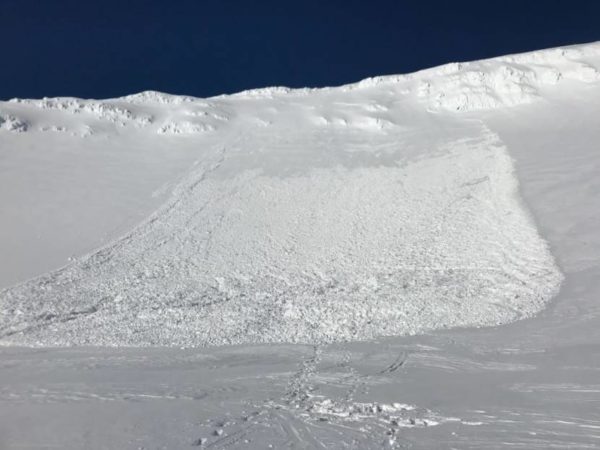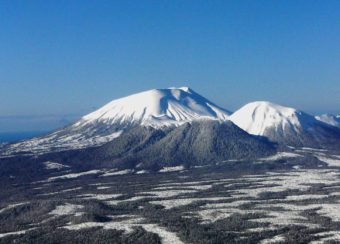
A skier was rescued unharmed after getting buried by an avalanche in the crater of Mount Edgecumbe on March 28.
The man triggered the slide during his descent, according to a report to the Coastal Alaska Avalanche Center. Two other skiers in his group used avalanche transceivers to locate him. They saw his boot sticking out of the snow, dug him out and cleared his airway. The man was buried for between five and eight minutes but sustained no injuries. All six members of the group exited the mountain safely.
Sitka Mountain Rescue technical team leader Eric Matthes said his team didn’t respond to the incident. But the group called in to report the avalanche and to let someone know that they’d left a ski and two poles behind.

“Their primary reason for getting in touch with us is that if somebody reported finding that gear in avalanche debris, that we would not be unnecessarily called out,” Matthes said.
The group didn’t want to be identified, but he said they were “pretty shaken up.” If they’d had to wait for the local search and rescue team to arrive on scene, the man probably would’ve died.
“These people had training and equipment, and they still had a pretty serious incident that might’ve gotten a lot worse,” he said.
Matthes said he hopes the incident can serve as a cautionary tale. There’s high avalanche danger in the mountains around Sitka right now, even in places people may not expect — like Blue Lake Road, Green Lake Road and some of the ravines near Herring Cove Trail. Not everyone who ventures into the mountains is adequately prepared, he said.
“A snow pack looks like just a pile of snow, but it’s actually made up of a bunch of different layers. And those layers are affected by temperature, by moisture content, by wind and a number of other factors,” Matthes said. “And so if you, if you don’t have the correct training and experience, it’s basically impossible to assess that stability accurately.”
The report said the group could’ve avoided the incident with better communication and more time spent assessing the conditions.
Local information about snow and avalanche conditions can be found in the Sitka Snow Report Facebook group. Additional avalanche resources or training opportunities can be found at alaskaavalanche.org.




